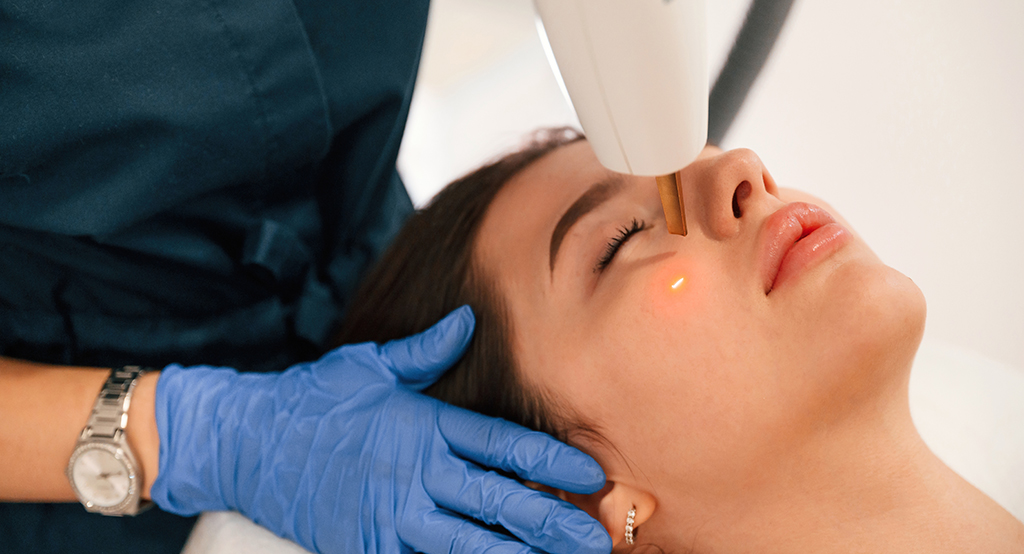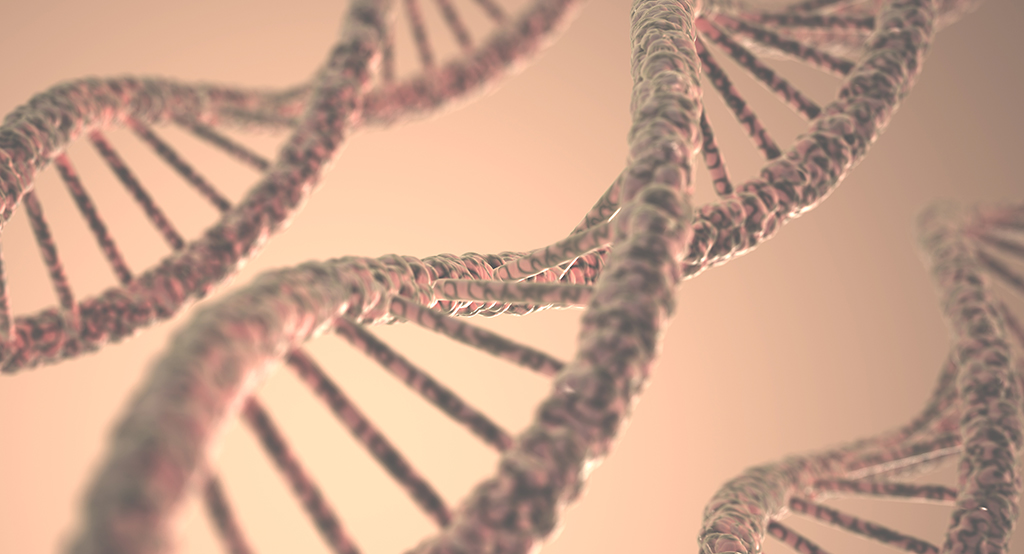Let’s face it—our skin does a lot more than just hold everything together. It’s our largest organ, our first line of defence, and often the first thing people notice. So it’s no surprise that humans have been trying to understand and care for their skin for thousands of years. Dermatology, the branch of medicine focused on skin, hair and nails, has come a long way—from crushed herbs and poultices to laser treatments and biotech skincare.
Think about how much your skin goes through on a daily basis—sun exposure, pollution, injuries, hormonal changes, and the natural process of ageing. It’s no wonder skin issues can affect our health, confidence and even mental wellbeing. From the blemish that shakes your self-esteem to the mole that might signal something more serious, our skin often speaks before we do. Understanding dermatology isn’t just about vanity—it’s about learning to care for a vital organ. In this article, we’re going to take a walk through time and explore how dermatology evolved, not just as a science but as a vital part of human health and well-being. By the end, you’ll see how far we’ve come—and why your skin deserves expert attention now more than ever.
Skin Deep: Ancient Civilisations and Early Remedies
Long before dermatology became a recognised medical specialty, ancient cultures were already treating skin conditions with whatever nature offered. The Egyptians were big fans of skincare. Cleopatra reportedly used milk baths to keep her skin soft, while papyrus texts described treatments for eczema, rashes and wounds using honey, aloe vera and resins.

In India, the ancient Ayurvedic system categorised skin diseases into types, linking them to internal imbalances in doshas (bodily energies). Treatments included turmeric, neem, sandalwood and oil massages—many of which are still used in modern herbal skincare. Traditional Chinese Medicine also had its own approach, using herbs, acupuncture and dietary changes to support skin health from within. The Greeks and Romans brought their own take, combining observation with experimentation. Hippocrates, often called the “father of medicine,” advocated a holistic approach, while Galen created cold creams that resemble today’s moisturisers. They used natural minerals, vinegars, and clays to address blemishes and irritations.
These early remedies may seem primitive, but they laid the foundation for later scientific inquiry. Their knowledge was passed down, written in ancient texts and preserved by healers and scholars. While not all methods were effective, they showed an understanding that healthy skin was key to overall health—an idea that still holds true. In many ways, these traditions reflected a belief in treating the whole person, not just the symptoms, a philosophy still echoed in holistic dermatological care today.
The Middle Ages: Superstition Meets Skin
In medieval Europe, the understanding of skin disorders took a back seat to superstition and religious belief. Skin diseases were often seen as divine punishment or a sign of moral failing. People believed illnesses were caused by imbalanced humours or sinful behaviour, not microbes or genetics. Conditions like leprosy led to social isolation, with sufferers often exiled from society, forced to wear bells or live in colonies away from the general population.
Treatment was limited to herbal remedies, prayer, or pilgrimage. The Church played a dominant role in healthcare, and many skin conditions were viewed through a spiritual lens. However, the Islamic world kept the flame of science alive. Scholars like Avicenna (Ibn Sina) compiled detailed medical texts that included sections on dermatological issues. His Canon of Medicine covered conditions such as scabies, warts and pigmentation issues, and it remained a medical standard in Europe for centuries.
Though Western medicine stagnated, Eastern knowledge preserved and expanded dermatological understanding. Still, it would take the Renaissance and the rise of empirical science to shift dermatology away from mysticism and towards modern medicine—where observation, experimentation, and anatomy could finally take the lead.
The Renaissance and Early Modern Era: Skin Under the Microscope
The Renaissance sparked a renewed interest in the human body—and with it, a more scientific approach to skin. Anatomists began to study skin structure in greater detail, and physicians started documenting skin conditions systematically. The invention of the microscope in the 17th century was a game changer. It allowed scientists to see skin cells and hair follicles up close, laying the groundwork for histology.
For the first time, the skin was viewed not just as a protective layer, but as a complex, functioning organ in its own right. Scholars across Europe began classifying skin diseases based on physical appearance, location, and cause. Medical schools introduced lectures and dissections that included dermatological cases. This period also saw the publication of the first dermatological texts in Europe, such as Daniel Turner’s De Morbis Cutaneis in 1714, one of the earliest English books devoted solely to skin disorders. Terms like “psoriasis” and “eczema” began to appear in medical literature, and the importance of skin in diagnosing internal disease gained traction. As science took centre stage, dermatology began to separate itself from folklore and superstition, stepping confidently into the realm of serious medicine.
The 18th and 19th Centuries: A Discipline Takes Shape
By the 18th century, dermatology began to emerge as a distinct field. French physician Jean-Louis Alibert was one of the first to classify skin diseases using botanical analogies—imagine skin conditions arranged like a family tree. Others, like British doctor Robert Willan, took a more clinical approach, describing and illustrating skin diseases in great detail. His work laid the foundation for modern dermatological diagnosis and classification systems used today.
The 19th century saw the opening of dedicated dermatology clinics and academic departments, particularly in Paris and Vienna, which became global centres for skin research. Training programmes emerged, allowing doctors to specialise in skin diseases for the first time. The invention of photography in the mid-1800s made it easier to document visual symptoms, further improving diagnosis and education. Diagnostic charts, wax models, and atlases of skin conditions were produced in large numbers, bringing unprecedented clarity to what had once been a vague and misunderstood area of health.
Around the same time, hospitals began opening dermatology wards, and special training in skin conditions became more widely available. Dermatology was no longer just a sideline—it was becoming a discipline in its own right, respected for its scientific grounding and clinical rigour.

The 20th Century: From Sulphur Ointments to Steroids
The 20th century brought explosive growth in medical science—and dermatology was no exception. With the advent of antibiotics, antifungals and corticosteroids, doctors now had powerful tools to treat everything from acne to severe eczema and psoriasis. The discovery of ultraviolet (UV) therapy proved effective in managing chronic skin conditions.
In the early 1900s, coal tar and sulphur-based treatments were standard, but the arrival of penicillin and later systemic therapies revolutionised care. Dermatology also began to branch into cosmetic treatments, with procedures like dermabrasion and chemical peels gaining popularity. Cryotherapy became another effective method for removing warts and precancerous lesions. By mid-century, dermatology journals and conferences were thriving, spreading knowledge across continents. Specialists began collaborating internationally, accelerating innovation and consistency in care.
As technology advanced, so did diagnostic tools—skin biopsies, patch testing, and dermatoscopes allowed for better and earlier diagnosis. This period also saw greater understanding of autoimmune and genetic skin disorders, as well as psychosomatic links—how stress and mental health affect the skin. Dermatologists became more attuned to the psychological effects of skin disease, acknowledging that effective care goes beyond the physical. This century marked the true modernisation of dermatology as a clinical and aesthetic specialty, blending science, technology and patient care in ways that were once unimaginable.
The Rise of Cosmetic Dermatology
As the science improved, so did public interest in skin aesthetics. Cosmetic dermatology exploded in popularity in the late 20th century, driven by advances in laser technology, injectable treatments, and a booming skincare industry. Dermatologists weren’t just treating disease—they were helping people feel more confident. Anti-wrinkle injections, dermal fillers, laser hair removal and skin resurfacing became household terms.

What began as simple anti-ageing solutions quickly evolved into a multi-billion-pound global industry. Patients now had access to non-invasive treatments that offered visible results with minimal downtime. Lasers became more targeted, radiofrequency technology was introduced, and skin tightening procedures entered mainstream clinics. Beyond appearance, cosmetic dermatology began intersecting with psychology. Treating conditions like acne scarring or vitiligo went beyond surface aesthetics—it helped rebuild self-esteem and social confidence.
Importantly, cosmetic dermatology also found therapeutic value. Lasers are now used to treat vascular birthmarks, rosacea, and even certain types of skin cancer. Injectables like botulinum toxin have been approved for conditions such as excessive sweating and migraines. Dermatologists had to balance both sides of their practice: medical necessity and personal enhancement. The field’s expansion required not just technical skill, but also ethical sensitivity—understanding the difference between enhancing beauty and treating dysfunction became a key part of modern practice.
Dermatology in the Digital Age: AI, Apps and Accessibility
Fast forward to today, and you’ll see dermatology embracing the digital revolution. AI-powered diagnostic tools can now identify skin lesions with remarkable accuracy. Teledermatology apps allow people to get expert advice without leaving home. Wearable devices monitor UV exposure and skin hydration. And social media has raised awareness about skin conditions like never before—though it’s also brought its share of misinformation.
Smartphones have transformed how patients engage with dermatologists. High-quality cameras allow users to photograph and track moles or rashes, then submit them for remote analysis. This has been a game-changer for people living in rural or underserved areas who previously had limited access to specialists. Clinics have adopted cloud-based record systems, making it easier to track long-term skin changes and ensure continuity of care.
Meanwhile, artificial intelligence is helping triage cases, flagging potential melanomas or other concerning symptoms in seconds. Machine learning is being trained on vast databases of skin images to aid doctors with diagnosis and decision-making. However, there are challenges. Data privacy, algorithmic bias, and misinformation from unverified influencers remain serious concerns. Still, the digital age has made dermatology more accessible, faster, and increasingly personalised. The ability to share images and get remote consultations is transforming how we think about—and access—skincare, bringing expert care right into the palm of your hand.
Breakthroughs and the Future: Genetics, Biologics and Beyond

The future of dermatology looks promising. Genetic research is shedding light on the root causes of skin disorders, while biologic therapies are offering life-changing relief for conditions like psoriasis and eczema. Personalised medicine is no longer a pipe dream—it’s here. Patients can now receive treatments tailored to their genetic makeup and lifestyle.
Advancements in genomics are helping doctors predict who is more susceptible to certain skin conditions and how they might respond to different treatments. For chronic or autoimmune conditions, biologics—engineered proteins that target specific parts of the immune system—are transforming outcomes. Drugs like these are not just treating symptoms; they’re addressing the underlying mechanisms that cause flare-ups.
Regenerative medicine is also pushing boundaries. Stem cell therapy and skin tissue engineering are showing promise for healing burns, chronic wounds, and surgical scars. In addition, wearable biosensors may soon provide real-time feedback on hydration, UV exposure, and allergens—allowing people to make proactive choices about their skin health. And let’s not forget about environmental dermatology, a growing field that looks at how pollution, climate change and lifestyle impact our skin. Dermatology isn’t just evolving—it’s leading the charge in personalised healthcare, integrating genetics, technology and environmental science to shape a more holistic approach to skin wellness.
Beyond the Clinic: The Human Side of Dermatology
Amid all the science and technology, it’s easy to forget that dermatology is ultimately about people. Behind every case of acne, psoriasis, or eczema is a story—of frustration, hope, embarrassment, resilience. Skin conditions don’t exist in a vacuum; they affect how we engage with the world. A visible rash can knock someone’s confidence. Chronic itching or pain can disrupt sleep, work, and relationships. Even minor skin concerns can take a toll on mental health. That’s why the human element of dermatology is so vital. It’s not just about diagnosing and prescribing—it’s about listening, empathising, and supporting patients through what can often be an emotional journey.
Dermatologists are often the first to spot signs of systemic illnesses, from autoimmune disorders to early cancers. They work closely with other specialists, bridging gaps between internal medicine and outward symptoms. And let’s not forget the growing number of people who seek help not for disease, but for restoration—of self-esteem, confidence, or even identity. Whether it’s scar revision after trauma, pigmentation treatment for skin conditions like vitiligo, or gender-affirming skincare, dermatology touches deeply personal parts of our lives.
This is a field where medical precision meets aesthetic nuance, and where compassion is just as important as clinical expertise. As we continue to push boundaries in genetics, AI, and regenerative treatments, it’s essential we hold onto that human focus. Because in the end, dermatology isn’t just about better skin—it’s about better living.

Final Thoughts: Why Dermatology Matters More Than Ever
So, what have we learned on this journey through time? Dermatology isn’t just about clear skin—it’s about quality of life. It’s about restoring confidence, managing chronic conditions, and sometimes even saving lives. From ancient ointments to gene therapy, the field has come a long way. And it’s still evolving, faster than ever. Whether you’re dealing with acne, worried about a mole, or just trying to look your best, dermatology has something to offer. It’s a testament to human curiosity and compassion—a reminder that our skin, while just a few millimetres thick, deserves serious attention.
What makes dermatology so unique is its visibility. Skin issues are often on display, affecting how we see ourselves and how others perceive us. That emotional weight is just as real as the physical discomfort many conditions cause. It’s why the role of the dermatologist is so much more than clinical—they’re healers, detectives, artists and counsellors all in one. They don’t just treat the skin; they improve lives.
Looking ahead, the fusion of science, technology and holistic care means the future of dermatology is not only exciting—it’s essential. In a world increasingly focused on personal health and wellbeing, dermatology stands at the forefront, helping us all feel a little more comfortable in our own skin.
